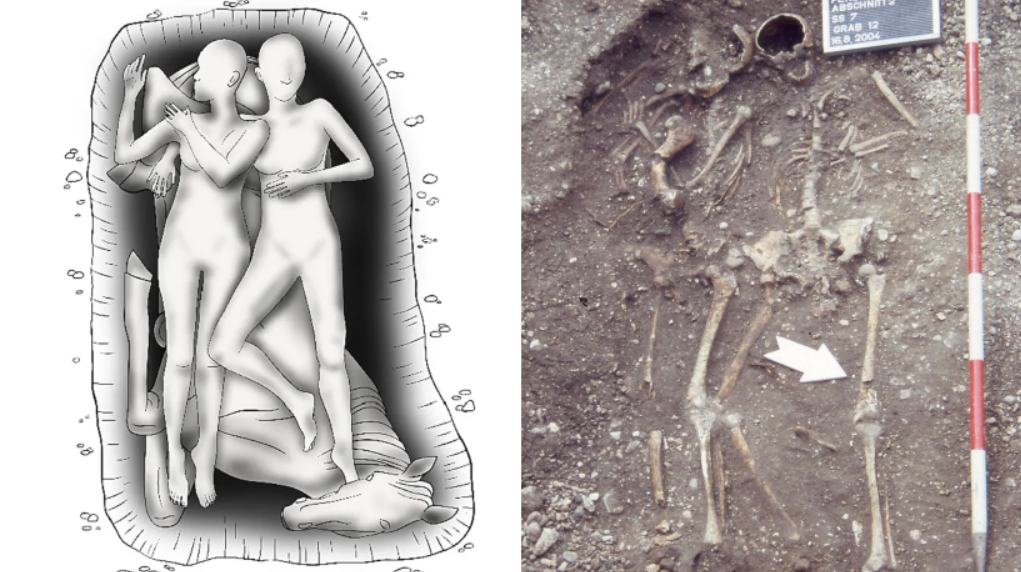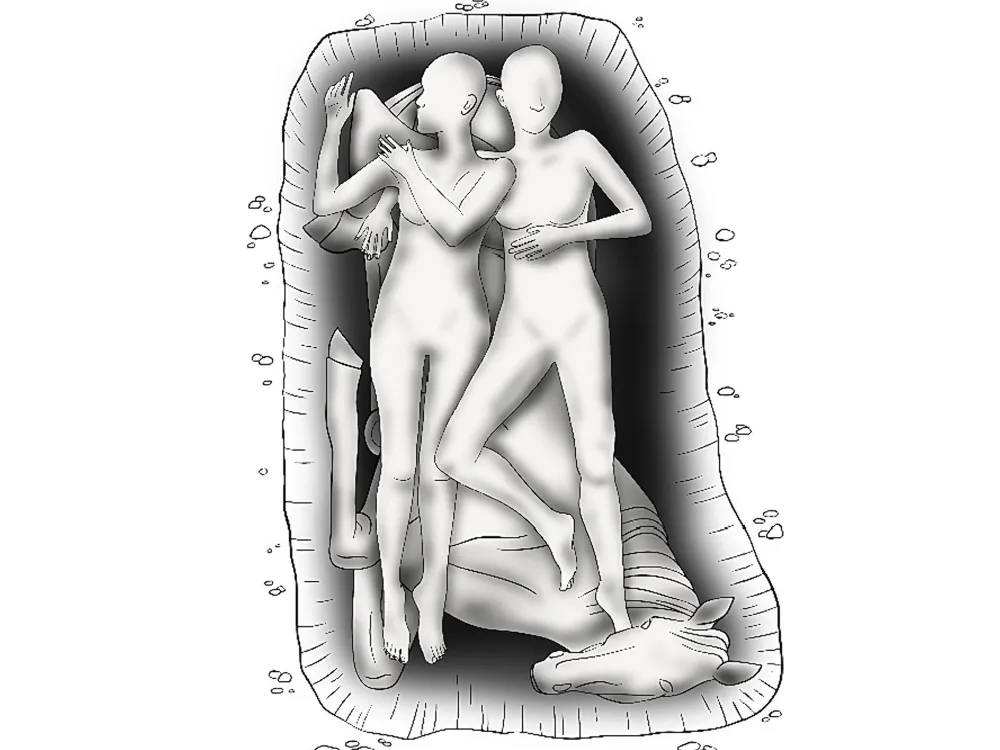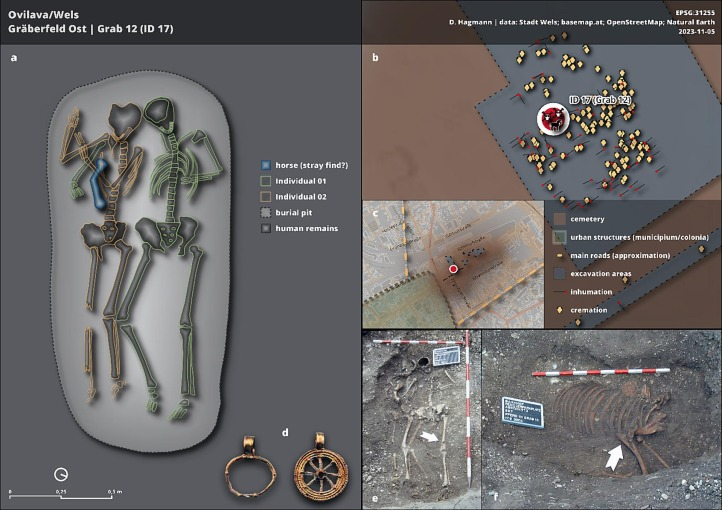In a surprising twist, new research has identified that two skeletons found in an Austrian grave, previously thought to be medieval lovers, are actually those of a mother and her daughter. These two women, who were buried together atop a horse, lived and died around 1,800 years ago.
The grave was excavated in 2004 ahead of construction in the area. Wels City Museum
A Discovery Revisited
When archaeologists first uncovered the grave in Wels, Austria, they assumed the entwined skeletons were romantic partners from medieval times. However, recent laboratory analyses have significantly altered this narrative. Radiocarbon dating and genetic testing have confirmed that the remains belong to a mother and her daughter, and they date back to the Roman period, around 200 C.E.
This artistic reconstruction shows how the two women and the horse may have originally been placed. Jona Schlegel / Journal of Archaeological Science: Reports
The Initial Misconception
The grave, located in the ancient Roman town of Ovilava (now Wels), was initially dated to the early 600s due to its depth and orientation, along with the presence of a horse skeleton—a common practice in the medieval era. However, radiocarbon dating of the bones and two golden pendants found with them revealed a much older origin.
Genetic Evidence
The study, published in the Journal of Archaeological Science: Reports, indicates that the two women were first-degree relatives. One skeleton, showing wear consistent with an age range of 40 to 60 years, embraced the other, aged between 20 and 25 years. This age difference led researchers to conclude they were mother and daughter, not siblings.
The Unusual Burial
The burial site in the "eastern cemetery" of Wels, an important necropolis outside the ancient town's walls, contained these two women and a complete horse skeleton. The arm of one individual was placed around the other's shoulder, suggesting a close emotional bond. This intimate pose initially led researchers to believe they were lovers.
Graphical visualization of the Grave – a: double burial; b and c: location within the cemetery; d: two pendants, found as grave goods; e: photo recording of the two individuals; f: photo of the horse (data: Stadt Wels, basemap.at, OpenStreetMap, Natural Earth).
The Mystery of the Horse
The inclusion of a horse in the grave raises intriguing questions. Horses were not typically buried with humans in Roman culture, suggesting that these women might have been part of a Celtic community within the Roman Empire. The older woman’s skeleton showed signs of frequent horse riding, supporting this theory.
Health and Death
Despite their skeletal conditions—spina bifida in the daughter and developing osteoarthritis in the mother—the exact cause of their deaths remains unknown. There were no signs of violence, leading researchers to speculate they might have succumbed to disease or an epidemic, dying simultaneously to be buried together.
Cultural Significance
This discovery not only corrects a historical misconception but also highlights the blending of cultures within the Roman Empire. The burial practices and the grave's contents suggest these women could have belonged to an elite group that maintained Celtic traditions while living under Roman rule.
This profound revelation offers a new perspective on the lives and deaths of these ancient women, providing a poignant reminder of the diverse cultural tapestry of the past.










